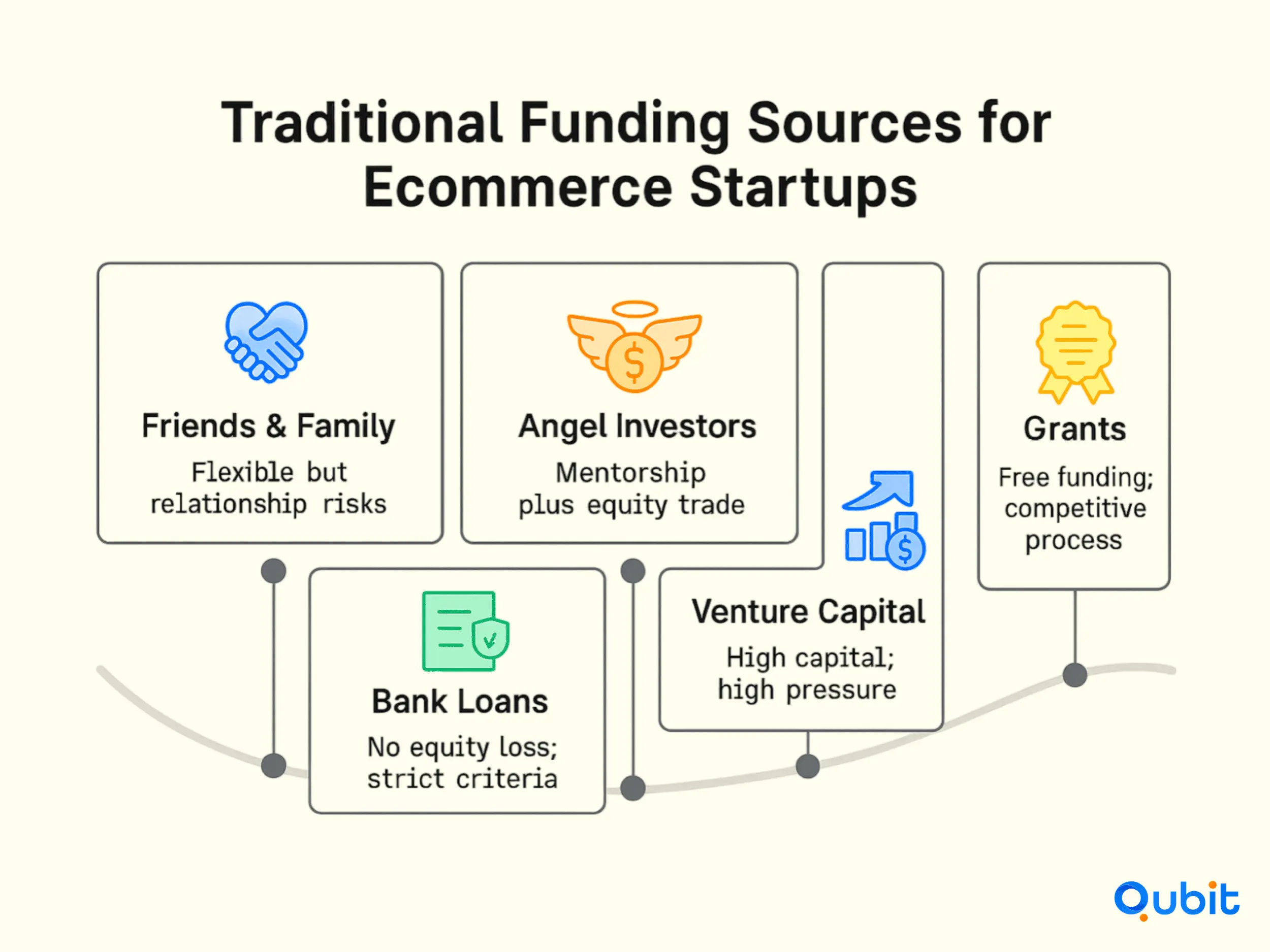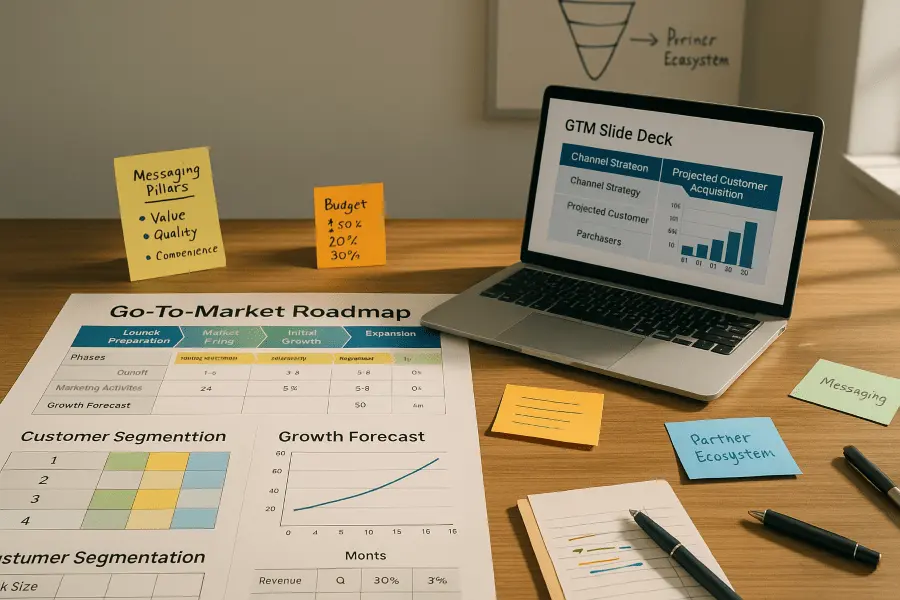Launching a successful ecommerce venture requires more than just a compelling idea—it demands a clear strategy for growth and market entry. A well-crafted go-to-market plan paired with an accurate ecommerce growth forecast can transform your pitch into a persuasive narrative that resonates with investors. This blog explores how founders can align their capital planning with actionable growth strategies to secure funding and scale effectively.
Your analysis of growth potential is enriched by a broader discussion in ecommerce startup fundraising strategies, where funding approaches are examined in a complementary context.
From capital planning to alternative funding options, this guide will equip you with the tools to present a pitch that stands out. Let’s dive into the essentials of crafting a plan that drives investor confidence and business success.
Capital Planning for Ecommerce Businesses
Strategic capital planning is the backbone of any successful ecommerce venture. With the global ecommerce market projected to reach $6.09 trillion in sales by 2024, businesses must align their funding strategies with this expanding opportunity. Effective capital planning involves estimating startup and operational expenses while ensuring these align with market expansion goals and investor expectations.
Estimating Startup and Operational Costs
Financial requirements of an ecommerce business begins with a detailed breakdown of startup and operational costs. These include website development, inventory procurement, marketing expenses, and logistics. For example, Clearco has funded over 10,000 businesses since 2015, showcasing the scale of investment required to support ecommerce growth.
To forecast and manage cash flow effectively, a detailed perspective on cost structures is offered in the ecommerce unit economics financial model, where numerical breakdowns deepen your understanding of revenue dynamics.
Aligning Funding with Expansion Goals
Capital planning must also consider the scalability of the business. As ecommerce markets grow at a projected year-over-year rate of 8.4%, businesses need to ensure their funding strategies support expansion into new markets. This involves securing adequate capital to meet increased demand while maintaining operational efficiency.
Highlighting success stories, such as DTOCS Founder Pallavi Pande, who won the 2025 AAPI Award, demonstrates how effective capital planning can lead to recognition and sustained growth.
Traditional Funding Sources for Ecommerce Startups
Securing funding is a critical step for ecommerce startups, and traditional methods often provide a reliable foundation. From personal networks to institutional investors, these options cater to varying needs and growth stages.

1. Friends and Family
Many entrepreneurs begin by seeking financial support from friends and family. This approach offers flexibility, as agreements can be informal and tailored to individual circumstances. However, mixing personal relationships with business can lead to complications. Misaligned expectations or financial strain may jeopardize relationships if the business faces challenges.
2. Bank Loans
Bank loans remain a popular choice for startups seeking predictable repayment terms. Entrepreneurs can access funds without giving up equity, making this option appealing for those who want to retain full control of their business. However, stringent eligibility criteria and collateral requirements can be barriers for early-stage startups.
3. Angel Investors
Angel investors provide funding in exchange for equity, often bringing valuable mentorship and industry connections. Their involvement can accelerate growth, especially for ecommerce businesses with innovative models. Yet, equity considerations must be carefully weighed, as giving up ownership can impact long-term decision-making.
4. Venture Capital
Venture capital (VC) firms are ideal for startups with high growth potential. In Q1 2024, VC funding for ecommerce reached $66 billion, marking a 6% quarterly increase despite market fluctuations. This demonstrates strong investor appetite for innovative ecommerce models. While VC funding offers substantial resources, it often comes with significant equity dilution and pressure to scale rapidly.
Quantitative benchmarks from ecommerce LTV CAC benchmarks 2025 add a numerical layer to the discussion, showing how venture capitalists evaluate metrics like CAC and LTV during early funding rounds.
5. Grants
Grants provide non-dilutive funding, making them an attractive option for startups. Governments and organizations often offer grants to support innovation, but the application process can be competitive and time-consuming. Additionally, grants may come with restrictions on how funds can be used.
Each funding source has its advantages and challenges, and selecting the right one depends on your business model, growth stage, and long-term goals. Balancing financial needs with equity considerations is key to building a sustainable ecommerce startup.
Alternative Funding Options for Ecommerce Startups
This section highlights innovative options like crowdfunding, incubators and accelerators, self-funding (bootstrapping), and invoice-based financing. Each approach offers distinct advantages and challenges, empowering entrepreneurs to choose the best fit for their business goals.
Crowdfunding: Harnessing Community Support
Crowdfunding has gained significant traction as a funding method for ecommerce startups. Platforms like Kickstarter and Indiegogo allow entrepreneurs to creatively pitch their early-stage products or concepts to a global audience.
By showcasing their product or service, startups can rally public support and secure funding while simultaneously validating market interest. However, crafting an engaging campaign requires time and effort, and success often hinges on the ability to connect emotionally with potential backers.
Incubators and Accelerators: Structured Growth Opportunities
For startups seeking mentorship and structured support, incubators and accelerators provide an excellent pathway. These programs offer guidance, resources, and sometimes seed funding in exchange for equity.
Entrepreneurs benefit from expert advice and networking opportunities, which can be invaluable during the early stages of business development. While the equity trade-off may seem steep, the long-term benefits of mentorship and industry connections often outweigh the initial cost.
Self-Funding: The Power of Bootstrapping
Bootstrapping, or self-funding, is a popular choice for entrepreneurs who prefer to maintain full control over their business. This approach involves using personal savings or reinvesting profits to fuel growth.
While bootstrapping eliminates the need for external investors, it can limit scalability and place financial strain on founders. Careful budgeting and strategic planning are essential to make this method work effectively.
Invoice-Based Financing: Aligning Capital with Revenue
Invoice-based financing offers a unique solution for ecommerce startups looking to scale. Services like Clearco provide growth capital by advancing funds based on future invoice amounts. This method aligns funding availability with revenue flow, ensuring businesses can invest in inventory or marketing without waiting for customer payments. However, startups must carefully evaluate the costs associated with this type of financing to avoid overextending their resources.
Future Funding Strategies for Ecommerce Startups
Securing funding for ecommerce startups requires a blend of innovation, strategic planning, and industry expertise. As the market evolves, adopting forward-thinking approaches can ensure sustainable ecommerce growth while attracting long-term investor confidence.
1. Harnessing Technological Innovation
Investors are increasingly drawn to startups that integrate cutting-edge technologies to solve industry challenges. For example, an unnamed startup raised $50M in Series B funding after implementing an AI-powered inventory management platform. This demonstrates how technological advancements can drive future ecommerce funding trends by showcasing operational efficiency and scalability.
2. Optimizing User Experience for Investment Appeal
Enhancing the customer journey can significantly impact funding opportunities. Glossier’s advanced product detail page (PDP) architecture and Apple Pay integration led to a 65% ROAS lift and a 25% CPA reduction. These improvements highlight how conversion rate optimization can secure fresh rounds of investment by demonstrating measurable growth potential.
3. Embracing Emerging Channels
Social commerce platforms, such as TikTok Shop, are reshaping ecommerce strategies by merging content, community, and commerce. This shift toward creator monetization offers startups a compelling narrative for future funding pitches, as it aligns with evolving consumer behaviors and market trends.
4. Building Investor Confidence Through Financial Planning
Robust financial planning is essential for attracting and retaining investors. Clearco’s $2.5 billion investment in ecommerce businesses since 2015 underscores the importance of demonstrating financial stability and growth potential. Highlighting partnerships with major funding entities can further validate a startup’s credibility.
Conclusion
Securing funding is a multifaceted process that demands a blend of strategic planning and adaptability. From capital planning to exploring both traditional and alternative funding sources, the strategies outlined in this article provide actionable insights for startups aiming to raise capital effectively. Incorporating forward-looking funding strategies alongside a robust go-to-market plan ensures long-term sustainability and growth.
If you're ready to accelerate your funding journey, we at Qubit Capital can guide you with our Fundraising Assistance services. Let us help you turn your vision into reality with tailored solutions designed for your unique needs.
Key Takeaways
- Strategic capital planning is essential for aligning funding with business growth objectives.
- A balanced mix of traditional and alternative funding sources optimizes investor appeal.
- Actionable fundraising tips and data-driven insights strengthen pitch credibility.
- Future funding success relies on leveraging technology and emerging market trends.
- Integrating a solid go-to-market plan with accurate financial forecasts builds investor confidence.
Frequently asked Questions
What is a go-to-market strategy for ecommerce?
A go-to-market strategy for ecommerce outlines how a business plans to reach its customers, define its value proposition, and generate sales through targeted marketing channels and clear segmentation.






